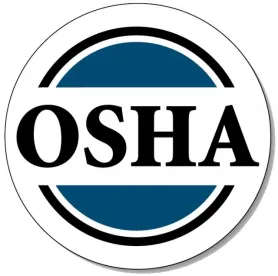The U.S. Equal Employment Opportunity Commission (EEOC) has issued updated FAQs on the Americans with Disabilities Act (ADA) issues relating to confidentiality, reasonable accommodation, hiring, and other pandemic-related topics. The U.S. Department of Labor Occupational Safety and Health Division (OSHA) also remains active, and has updated employer recordkeeping and reporting requirements regarding workplace transmissions of COVID-19.
EEOC Updated Guidance on ADA Interplay with COVID-19
On April 9, the EEOC added to its previous guidance, What You Should Know About COVID-19 and the ADA, the Rehabilitation Act, and Other EEO Laws. For our summary of prior FAQs provided in this guidance, read our 3/19/20 post.
Confidentiality: The new FAQs address employer obligations to maintain the confidentiality of COVID-19 medical information. Specifically, according to the guidance:
-
COVID-19 medical information such as employee temperature testing results, information provided by an employee about his or her symptoms, or an employee’s self-disclosure of having COVID-19, may be maintained in the same confidential file as other medical information; there is no need to create a separate COVID-19 file.
-
Employers may keep a log of daily temperature testing results of its workforce, which must be maintained confidentially.
-
Employers may disclose to public health agencies the names of employees who it learns have COVID-19.
-
Staffing agencies and contractors that place employees at an employer’s worksite may notify the employer upon learning that staffed individual has COVID-19, so the employer can determine of others in the workplace have been exposed.
Reasonable accommodation: The new FAQs try to tackle some potentially complicated issues employers may face in responding to specific circumstances and accommodation requests relating to COVID-19, including:
-
What can/should an employer do to accommodate an employee who is at greater risk for COVID-19 to due to an underlying disability, if the employee’s job must be performed in the workplace?
Employees at greater risk might request accommodations to avoid exposure to COVID-19 in the workplace. The EEOC guidance identifies certain “low-cost” accommodations that might meet the employee’s needs, such as designating one-way aisles, using plexiglass tables, and other measures to assure minimum distances between co-workers and customers can be maintained. Of course, many of these measures presumably already are being implemented for the general employee population, as has been recommended in CDC guidance. The EEOC also urges flexibility by employers and employees to determine if additional measures could permit the employee to perform essential functions of the job while reducing exposure to others at work and while commuting, including temporarily restructuring marginal job duties, transferring the employee to a different job, or modifying the employee’s work schedule or shift assignment.
-
What about accommodations for employees with underlying mental health conditions that have worsened due to the pandemic?
The EEOC notes that while most people may feel some pandemic-related stress caused by the disruption to daily life, individuals with conditions like anxiety disorder, obsessive-compulsive disorder, or post-traumatic stress disorder may have more difficulty. If an employee seeks accommodation of a mental health condition, the guidance reiterates that employers may ask questions to determine whether a disability exists, discuss with the employee how the requested accommodation will enable the employee to “keep working,” explore alternative accommodations to meet the employee’s needs, and request medical documentation. The guidance does not offer specific suggested accommodations to address such situations. Also potentially noteworthy in this section is that the EEOC describes a suitable accommodation as one that allows the employee to “keep working,” as opposed to the “essential functions” language often used when discussing accommodations. Nothing in the guidance expressly eliminates the employee’s ability to perform “essential functions” as the relevant inquiry when evaluating whether an accommodation of situations caused by COVID-19 is reasonable. Still, the EEOC’s word choice may suggest a broader approach be considered – at least in the current climate – when evaluating employees’ accommodation options, consistent with the agency’s exaltation of greater employer flexibility.
-
For employees who are required to telework, should an employer postpone following up on an employee’s accommodation request if the accommodation will not be needed until the employee is physically back at work in the workplace?
According to the guidance, not necessarily. Although employers may give higher priority to accommodation requests that affect employees while teleworking, they can still proceed to gather needed information from the employee and, if the accommodation request is granted, make preparations for implementation once the employee is physically back in the workplace.
-
Can an employee who was receiving a reasonable accommodation before the pandemic request a new or different accommodation now?
The guidance makes clear that employees who were previously receiving reasonable accommodations may be entitled to additional or modified accommodations, absent undue hardship on the employer. For instance, an employee who is teleworking may need a modification to the accommodation that was provided while the employee was working in the workplace. In responding to such a request, employers may ask the employee if the new accommodation request is based on the same or different disability, and why the additional or altered accommodation request is needed.
Hiring: The EEOC guidance adds a new FAQ specific to hiring issues. According to the EEOC, employers cannot withdraw a job offer or postpone a start date due to the applicant being 65 or older or pregnant, despite the CDC’s identification of these individuals as being at higher risk for COVID-19. The guidance states that an employer may choose to allow the individual to work remotely, or discuss with the applicant if he or she would like to postpone the start date. However, the employer does not have the option of postponing the start date unless the applicant wishes to or agrees to do so.
Harassment: The EEOC has added to the guidance an FAQ on prevention and response strategies for pandemic-related harassment due to national origin, race, or other protected characteristics. The guidance states that employers should expressly communicate to employees that pandemic-related fear should not be misdirected toward individuals based on their race, national origin, or other protected characteristics, and provides links to EEOC anti-harassment publications including policy tips for small businesses, and materials produced from the EEOC Select Task Force on the Study of Harassment in the Workplace.
Layoffs and furloughs: A new FAQ poses the question, “Under the EEOC’s laws, what waiver responsibilities apply when an employer is conducting layoffs?” In response, the EEOC states that special rules apply when an employer offers severance packages in exchange for a release of claims, and provides a link to the EEOC’s technical assistance document on severance agreements describing requirements for a valid release of claims, available here: Technical Assistance Document on Severance Agreements.
OSHA Revises Prior Enforcement Guidance on Reporting Workplace Transmissions
On April 10, the DOL’s Occupational Safety and Health Division (OSHA) issued an interim enforcement memo walking back its previous enforcement guidance on reporting of workplace transmissions for some employers. The interim Enforcement Guidance for Recording Cases of Coronavirus Disease 2019 (COVID-19) is available here.
COVID-19 is a recordable illness under OSHA’s recordkeeping requirements, requiring employers to record cases of COVID-19 if:
-
There is a confirmed case of COVID-19.
-
The confirmed case of COVID-19 is work-related as defined by 29 CFR 1904.5; and
-
The confirmed case of COVID-19 involves at least one of the recording criteria set forth in 29 CFR 1904.7 (including death, days away from work, restricted work or transfer to another job, medical treatment beyond first aid, or loss of consciousness, or a significant injury or illness diagnosed by an authorized health care provider even if it does not result in death, days away from work, restricted work or job transfer, medical treatment beyond first aid, or loss of consciousness).
In recognition that some employers may not be able to determine whether confirmed cases of COVID-19 are due to exposures at work, until further notice, OSHA will not enforce its recordkeeping requirement that calls for employer determinations of whether COVID-19 transmission is work-related, absent objective evidence reasonably available to the employer that a confirmed case of COVID-19 may be work-related (for example, multiple confirmed cases amongst employees who work in close proximity). “Reasonably available” evidence could include information provided to the employer by employees and information an employer learns in the ordinary course of running the business and managing employees.
OSHA’s suspension of this recordkeeping requirement does not apply to employers “in the healthcare industry, emergency response organizations (e.g., emergency medical, firefighting, and law enforcement services), and correctional institutions.” These employers must continue to make work-relatedness determinations.



 />i
/>i
